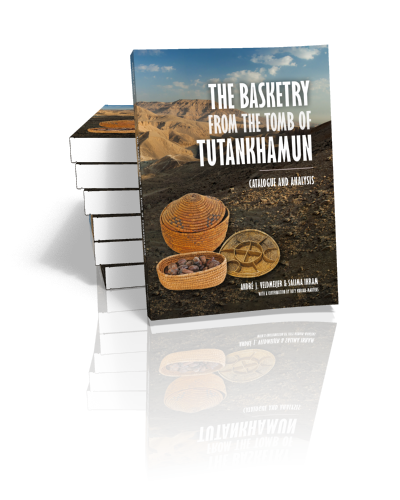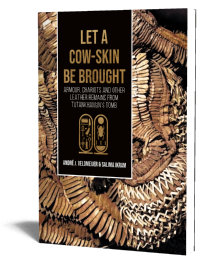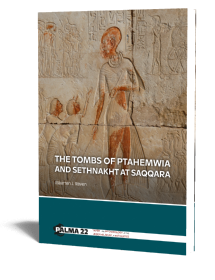Abstract:
The tomb of Tutankhamun, discovered in 1922 in the Valley of the Kings in Luxor (Egypt) by Howard Carted, yielded over 5000 items. Among the vast number of richly embellished precious objects, such as the solid gold coffin and mask, were also more mundane objects, including the hitherto unpublished basketry objects. Baskets, the ‘plastic bags’ of the ancient world, were used for storage of all sorts of things, including food, clothing and jewellery, and many that were found in the tomb retained their original contents.
The present work describes and illustrates the basketry and basketry boxes from the tomb in detail, giving attention to the technology, material, shape, decoration, as well as their contents. The analysis contextualises the basketry in a wider framework, comparing it with other examples and the visual record, with regard to the technology used to make them and their uses.
The book will be of interest for those interested in basketry, ancient technology, daily life and burial customs in ancient Egypt and is written for a wide audience.
Contents
Preface
1. Introduction
1.1. Tutankhamun’s Tomb: Contextualising the Basketry
1.2. The Post-Excavation Peregrinations of the Baskets and Numbering Issues
2. A Basket’s Life
2.1 Baskets, Boxes, and Bottles: Shapes and Sizes
2.2 The Uses and Roles of Baskets
3. Tutankhamun’s Baskets
4. Uncoiled: How to Study Baskets
5. Repairing the Wear & Tear: Conservation and Restoration
6. What Makes a Basket: Basketry Technology
6.1. Materials
6.1.1. Introduction
6.1.2. Identification of Materials (by Lucy Kubiak-Martens)
6.2. Manufacturing Coiled Basketry
6.2.1. Introduction
6.2.2. Stitches
6.2.3. Start and Finish of a Basket and Lid
6.2.4. Decorating Basketry
6.3. Manufacturing Basketry Boxes
7. No Eggs in These Baskets: the Contents of the King’s Baskets
7.1. Introduction
7.2 Nuts and Berries: A Healthy Diet
8. Beyond Tutankhamun’s Tomb: Comparative Basketry
9. Discussion and Conclusions
Appendix I
I.1 Examined Material from the Tomb
I.2 Carter’s Descriptions
I.3 Tutankhamun’s Basketry Boxes
I.4 Comparanda
Appendix II
II.1 Tables
II. 2 Concordance
Glossary
Bibliography

Salima Ikram
Salima Ikram is Distinguished University Professor of Egyptology at the American University in Cairo, and has excavated extensively in Egypt as well as in Turkey. She has directed the Animal Mummy Project, the Amenmesse Project (KV10/KV63), the North Kharga Oasis Darb Ain Amur Project, and headed the archaeozoology team at Kinet Hoyuk in Turkey.
read more












